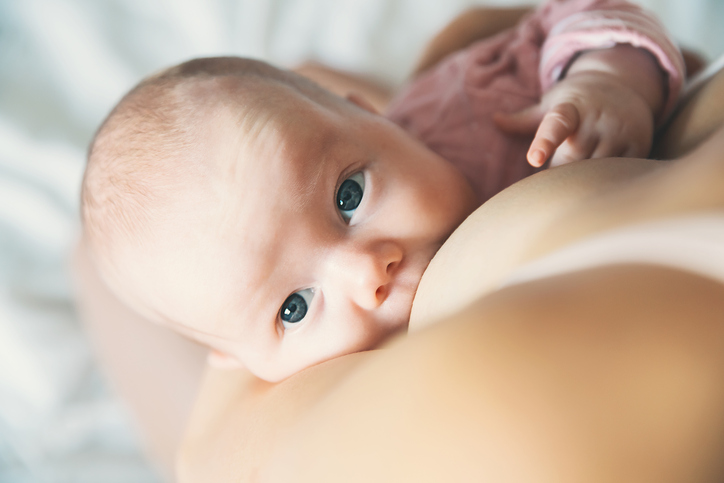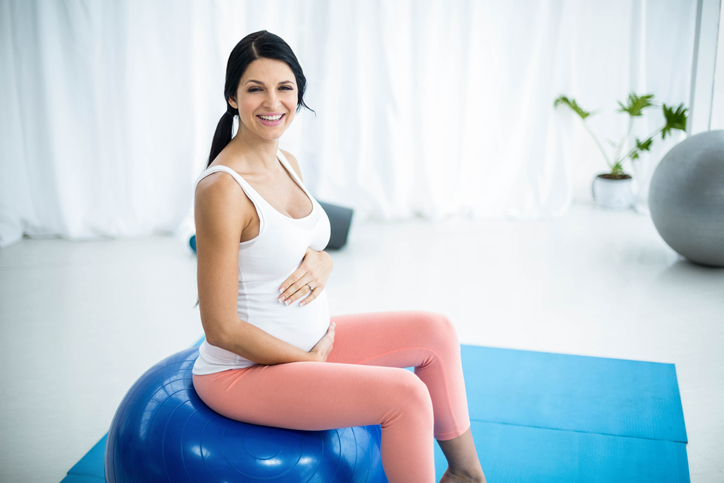A lot of expecting moms nervously wonder, will I experience breastfeeding pain?
You may have heard horror stories from friends about breastfeeding challenges, or maybe just thinking about a hungry little mouth near such a sensitive spot makes you cringe.
Understandable. And that’s why we’re here… to reassure you.
You may have 30-60 seconds of breastfeeding pain when your baby first latches on, but anything beyond that probably indicates an issue of some kind. An issue that can likely be corrected!
So if breastfeeding discomfort continues, talk to your healthcare provider . You shouldn’t have to be in pain to feed your baby.
Breastfeeding Shouldn’t Hurt
We’re sure you’ve heard a mom or two complain about breastfeeding pain, but that doesn’t mean pain is “just how it is”.
If breastfeeding hurts beyond the initial moments it takes your baby to latch on, something else is going on.
Related: Must Have Breastfeeding Products That Make Life Easier
Don’t try to “tough it out” and ignore the pain. It’s in yours and your baby’s best interests to reach out to a lactation consultant to figure out what’s happening before your nipples get so sore you don’t want to breastfeed anymore.
Lots of things can cause nipple pain during breastfeeding.
The sooner you and your health care provider determine the root cause of your breastfeeding problems, the sooner you can start addressing them.
Then you can go back to enjoying breastfeeding as the nurturing, comforting, and bonding experience it should be between you and your baby.
Common Causes Of Breastfeeding Pain:
If you’re experiencing breastfeeding pain, here are a few potential reasons why.
1. Shallow Latch
Your baby isn’t getting enough of your breast in their mouth during feeding causing pain, and potentially damage to your nipple.
2. Thrush
If your baby has a yeast infection in the mouth (thrush) they can pass it onto you, causing nipple pain.
Breastfeeding thrush symptoms include; breastfeeding shooting pain or burning during or after feeding, and/or itchy, red, shiny, painful nipples. See a healthcare provider to treat you (and your baby).
3. Breast Pump Damage
Improperly using a pump can damage your nipples causing breastfeeding pain.
Meet with a lactation consultant who can help you find a breastfeeding pump in the correct size and show you how to use it properly.
4. Mastitis
An infection of the milk ducts. Symptoms include; fever, chills, a hard or red area of the breast, or red streaks on your breast.
Mastitis can be treated with antibiotics, contact your healthcare provider.
5. Milk Bleb
This is caused when a thin layer of skin grows over a milk duct opening and causes milk to get trapped in the duct.
It looks like a white or yellow dot on the nipple and may have pain right behind that spot. Your lactation consultant or doc can easily fix this.
6. Tongue-Tied
If your baby is tongue-tied, meaning the skin connecting their tongue to the floor of their mouth is short or extends too far out, this can cause nursing problems and pain.
Your doctor can perform a minor procedure that can easily fix this problem for your baby.
7. Nipple Blister
A clear, yellow, or bloody blister on the nipple that causes pain during feeding. Friction or suction from a poor latch often causes this.

Engorgement
Another common cause of breastfeeding discomfort is engorgement. Why does this cause breastfeeding pain?
Engorgement makes it difficult for your baby to latch deeply, which can lead to painful nipples.
If your breasts feel hard, swollen, lumpy, or uncomfortably full it may be due to engorgement. There are steps you can take to ease the pressure and relieve the pain.
Breastfeeding tips to help relieve engorgement:
- Nurse very frequently, a minimum of 8 times in 24 hours, waking the baby by the third hour if necessary.
- Apply heat to the breast for 5-10 minutes BEFORE nursing. Use a warm, moist compress or take a warm-hot shower with gentle breast massage to help milk flow.
- Apply cold compresses to your breasts AFTER feedings for 15-20 minutes. Cold can reduce swelling and inflammation.
- Massage firm, lumpy areas of your breasts with your fingertips while your baby is nursing. Gentle massage or breast compressions help with milk drainage.
If you’re experiencing any type of breastfeeding pain, don’t wait to ask for help!
A lactation consultant can work with you to determine the root cause of your pain and find the best way to treat it. That way, you can get back to nursing your little bundle of joy…comfortably.
Wondering if your baby is getting enough breast milk? That’s another one of the more common breastfeeding challenges we address here.
SHARE what you need to know about breastfeeding pain on Facebook or Pinterest by clicking the buttons below.












